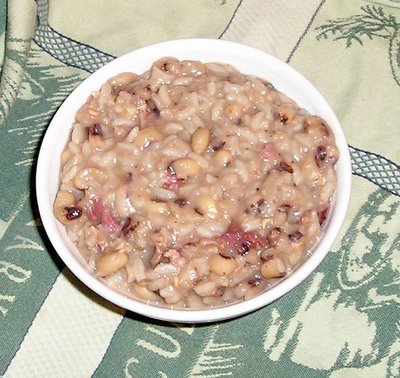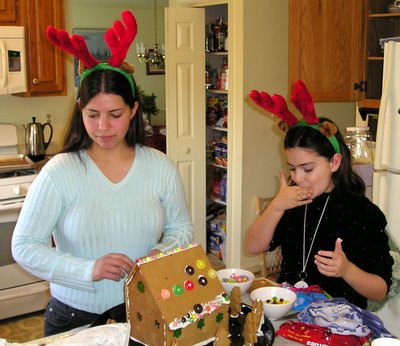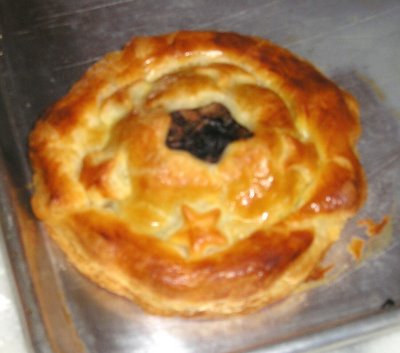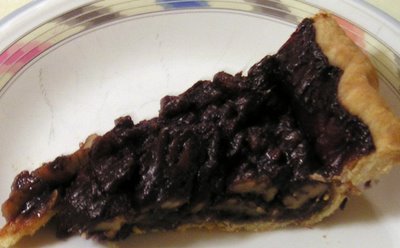It will no doubt come as a shock to my regular readers (who are used to seeing me get straight to the point, never deviating by so much as a prepositional phrase from the swift completion of my appointed rounds, never taking the backroads of circumlocution or jamming the Interstates of simple, declarative sentences with the overturned tractor trailers of hyperextended metaphors) that I am beginning this post with a few provisos.
I am (eventually) going to be writing about foods that are especially appropriate for gift giving and that you can make yourself. I am, however, acutely aware that many people will have excellent reasons for not giving this sort of gift. You may actually enjoy shopping and spending for gifts or (on the other end of the capitalist spectrum), you may make charitable donations on behalf of all the people upon whom you would otherwise bestow hand-crafted, semi-automatic candle snuffers. And if you fall in either of these groups, then more power to you.(Really: I can't tell you how much I wish that I were the sort of person who could enter a mall without feeling that I had gotten trapped in an amateur production of
Huis Clos; I think it goes back to the time I was in the lowest level Filene's basement in Boston and couldn't find the up escalator for twenty minutes.) At this time of year, I reckon that if you're happy, I'm happy.
I am equally aware that gifts of homemade food are not appropriate for everyone. If you are going to send your eight-year-old nephew a box of cookies, for example, you might want to slip in a ten-dollar bill or a gift card to a local toy store; otherwise, you might just as well give him socks. (By the way, I don't think that anyone who is in a position to give me a Christmas gift reads this blog, but if you are, I consider plain black socks an excellent gift. Apparently, I am not even remotely eight years old. I also like mechanical pencils.)
My main complaint about Christmas is that too many people complain a lot about Christmas. I'm not talking about people who don't like Christmas for religious reasons. I suppose that if I were at all religious and that if my notional religion were something other than Christianity, I might be annoyed about the occasional insensitivity of Christians to other faiths. But there are plenty of people who have no theological issues whatsoever and who complain that Christmas has gotten all out of hand because the local stations start playing Christmas carols at Thanksgiving or because there are candy canes on the sidewalk right after the Fourth of July. What's really bothering you is not a surplus of Christmas. Do you really think that we're getting so much more than our fair share of peace on earth and/or goodwill towards men that we should be complaining? One supposes not. One supposes that what you are really troubled by is the commercialization of Christmas. (Ok, and maybe the fact that the local stations are playing
really bad Christmas music; if I hear that damned "Christmas Shoes" song one more time, I may spontaneously combust; sweetheart, if your mama says she's dying and the only thing she cares about is a pair of pumps, I'm not so sure that it's Jesus she's going to meet tonight. I'm just sayin'.)
I myself do not appreciate the oppressive attentions of the retail industrial complex at this time of year. I do, however, find that giving gifts brings me pleasure, and I can think of no better way to simultaneously say "Merry Christmas!" and "Up yours, WalMart!" (I mean that in the nicest possible way, you understand) than to give presents of my own making. This is not to say that I will not be visiting the inside of a few retail establishments this year. I do, after all, have two children, and they expect both comestibles (including a 24-pack each of Ferrero Rocher, an absolute steal at Costco) and presents of a more durable nature (though what A. mostly wants is for me to purchase for her song downloads for the iPod that her mother and stepfather are giving her; don't kids believe in copyright infringement anymore?). Almost everyone else I know, however, already suffers from a superabundance of stuff, and one of the principal advantages of sending edible gifts is that they only need to be stored for as long as it takes to eat them. (Which, I am sad to report, is less time than it takes to get them home from Costco insofar as the Ferrero Rocher is concerned. Fortunately, the clear plastic boxes have a variety of other uses.)
Some of you will no doubt be objecting that preparing food for holiday giving takes a great deal of time. In my case, it's time that I will be spending doing something that I very much enjoy, but even if you only tolerate baking, I reckon that in well under eight hours (let's say less than four hours on each of two Saturdays), you can produce a mountain of deliciousness for your friends, relatives, and neighbors. Compare that to how much time you will spend going to the mall, parking at the mall, walking to the mall, cursing at the congestion in the mall, and actually shopping at the mall, and a few hours in early December in a cozy kitchen really sounds very reasonable. (I am, of course, aware that you can now do most of your shopping and, better still, your shipping via the Internet. If you'd like to go that route, and if your intended donees have not had the good sense to update their Amazon wishlists for the holidays, the utterly fabulous
bloghungry [and how jealous are you that he thought of that name before you did?] has some terrific suggestions for you.)
If you want to maximize your holiday culinary gift-giving utility (I knew that policy course in my master's program would come in handy someday) then you want to pick three or four recipes that a) you like, b) are relatively easy to make in quantity, and c) everyone else isn't already making and sending. You are not allowed to send out the same thing that your mother sends out unless your mother has actually stopped sending it out and people are actually sorry that they won't be receiving it. I say three or four recipes because one unit of three things each invariably seems like more than three units of one thing. Also, if you're sending your edibles to a family or to a person who will be sharing them with his or her family, sending a variety ensures that people will have something to fight over. This is especially critical during the holidays because if a family who gets together only once or twice a year isn't able to fight over who gets the spiced walnuts, then they're going to start fighting over what really makes the family dysfunctional, and the idea of a thirty-five year old man telling his thirty-eight year old brother how much he resents things that happened twenty-five years ago can only be unpleasant.
Speaking of spiced walnuts, the Laurie Colwin recipe (I first read it in
Gourmet, and it appears in
More Home Cooking, but if memory serves, she originally found it in something like someone's local Junior League cookbook) may be both the easiest and the best recipe for an edible gift that you'll ever find. People who are first presented with these nuts are not sure what to make of them, but their puzzlement quickly turns to addiction. (If they call and ask you for the recipe, make some quip about how "the first one is free," and then arrange to get disconnected.)
Rosemary Walnuts2.5 T. butter
2 t. dried rosemary, crumbled
1 t. kosher salt
1/2 t. ground cayenne pepper
2 cups walnuts
Preheat the oven to 325 degrees
In a saucepan, melt the butter and add the rosemary, salt, and cayenne. Stir well. Add the walnuts, and toss well to coat. Spread the walnuts on a baking sheet and bake for ten to twelve minutes.
You can make mounds and mounds of these nuts in fifteen minutes. You'll want to get the nuts in the big bags at Costco or from a bulk supplier. You can use more or less cayenne if you like, but try the recipe as written first to get an accurate gauge of your taste. When the nuts have cooled, put them in
cellophane bags, preferably with a gold or silver
twist tie. Presentation matters.
You could, of course, go with an all-nut theme and caramelize some almonds to accompany the rosemary walnuts for a sweet and savory dynamic duo. I prefer to put my almonds (and/or my pistachios) into
biscotti, however. The sort of biscotti that I make keep very well, and everyone loves them. Everyone also loves
double chocolate walnut biscotti, too. They make an especially good hostess gift when you're invited to a holiday party. As with all biscotti, they spend a while in the oven, but they are very simple to make, and the amount of time you spend actually doing anything is limited. I don't usually make the double-chocolate variety for myself because I don't like them as much as my standard recipe, but they are a huge hit with the relatives. Sometimes I will turn them into triple chocolate biscotti by melting some semisweet chocolate and dipping one end of each cookie into the chocolate and then letting them rest on waxed paper so that the chocolate can firm up.
It wouldn't be an anapestic Christmas parcel without a fruitcake. This year, I'll be sending out the black cakes (about which I have already bored you sufficiently). But I don't make black cake every year (or at least I haven't up to now), and when I do, I don't usually make them in such large quantities. I adore dark fruitcakes, and I am perfectly willing to stand up for them against the unreasonable calumnies that they are subjected to on an annual basis. But my mom pretty much has the standard dark fruitcake covered, so I long ago began making the
Joy of Cooking's white fruit cake, which, as the recipe will tell you, is really a pound cake with (a lot of) dried fruits. Surely you have a copy of the (original)
Joy of Cooking, but if you don't, I'll be happy to send you the recipe if you email me. You will, of course, have to bear in mind that I change the recipe as I see fit.
JoC itself says that you can use any combination that you like to make up your four cups of nuts and dried fruits. I think the pecans, dried apricots, and golden raisins that they suggest are very good, but if I can find black walnuts, I will happily use 2 cups of them and 2 cups of dried cranberries or cherries (dried, not those glaceed monstrosities that one finds in the supermarket) for my fruitcake.
People who hate fruitcake love my white fruitcake. When it's out of the oven and fully cooled, I soak a piece of cotton cloth in rum and wrap it around the fruitcake and then wrap that in aluminum foil, and I douse the cloth with more rum once or twice a week. When I'm ready to serve the fruitcake, I slice it very thin, which is easy to do because of the soaking in rum.
It's still not too late to make fruitcake. It's getting to the point where it's a bit late to make it and ship it, but you could still pull it off, provided that you soak it well and wrap it securely before you entrust it to the tender mercies of the UPS guy.
There's one more food item that I routinely send to relatives. It's one of those recipes that you usually see on the back of the label of some canned product, and I'm not proud of the fact that I make it, but it really is tasty, and the whole family loves it, though why they can't make something this simple themselves is beyond me. Perhaps it's because I've never shared the recipe with them. Anyway, I'll post it here if you promise to pretend that I didn't.
Fudge1 can sweetened condensed milk
18 ounces semisweet chocolate chips
Dash of salt
1 cup pecans or black walnuts, toasted
1 tsp. vanilla extract
Line an 8" square pan or a 9x5 loaf pan with waxed paper.
Put the condensed milk, the chocolate chips and the salt in a glass bowl and microwave until melted. Alternatively, you can melt them in a saucepan or, if you're really skittish, the top of a double boiler. Stir until smooth.
Stir in the vanilla extract and the nutmeats.
Pour into a prepared pan. Refrigerate until set. Serve with large quantities of guilt.










